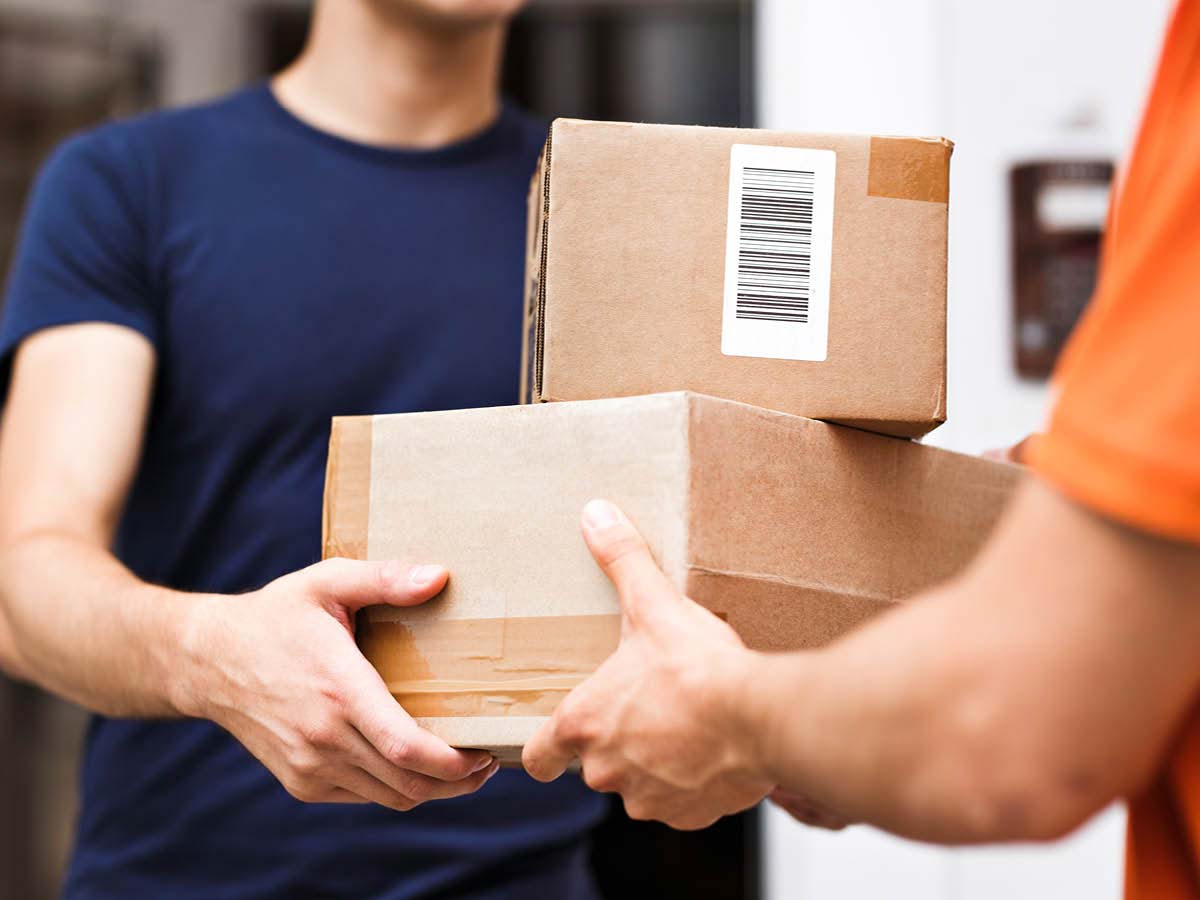If you’re receiving your package in person
1. Sign for it
One of the best ways to keep your package safe is to sign for it upon delivery. Many online retailers offer the option to require a signature when the package arrives, so be sure to go this route whenever possible.
2. Have items shipped to your workplace
If your company allows staff to receive packages, consider having your delivery sent to your workplace. Just be sure to check with your employer beforehand (especially if you’re expecting a large package) since each company will have different rules and/or processes related to package delivery.
If you can’t be there to receive your package in person
3. Ask friends or neighbours
If you’re away from home frequently, you might want to consider asking your friends or neighbours if they’re okay with having your package shipped to their place. Further to our previous point, you can also make sure the package gets into their hands by requesting that a signature be required upon delivery.
4. Pick up at the post office
If you live near a post office, you may be able to have your packages held there instead of delivered directly to your door, so you can pick them up at a time that’s convenient for you.
5. Use a smart locker
Check to see if your community, condo, or apartment building offers access to smart lockers where items can be secured until you pick them up. Once your package arrives, you’ll receive a code to open the locker and retrieve your delivery.
6. Ship your purchases to your local retailer
If you’re buying from a big box store or a shop with a physical location nearby, consider picking up your order when the option is available.
7. Use a porch locker
If you’re receiving expensive items or you live in an area that’s experiencing high theft rates, a specialized porch locker could be a good option to protect your packages. Look for one that’s designed with a self-locking lid and can be secured to the ground or attached to an immovable object.
8. Ask drivers to leave your package out of sight
Some online stores will let you enter special delivery instructions during your check-out process. You can use this opportunity to request the driver hide your package behind an object on your porch, such as a large potted plant or piece of furniture.
9. Invest in a security system
A security camera can help monitor your front porch and may also deter potential thieves from stealing your packages since they know they’ll be caught on camera. Many models will also send an alert to your phone when someone is at the door and let you speak with the visitor, so you can advise delivery drivers where to leave the package.
At the end of the day, there’s no perfect way to prevent package theft – but taking a few simple precautions can go a long way towards keeping your deliveries safe. If you’ve had something stolen from your front porch, remember that you could submit a home insurance claim to be reimbursed, but you may need to pay your deductible first – so you’ll want to consider the value of the item vs. the cost of your deductible when deciding how to proceed. If you have questions, don’t hesitate to send us a secure email through Online Services or give us a call at 1-888-476-8737.
Source:
One in four Canadians have had a package stolen by a porch pirate: survey
‘Tis the season for porch pirates: How to avoid package theft this holiday season
9 tips to help prevent package theft

FedEx Canada reported that 1 in 4 Canadians had deliveries stolen from their front porch in 2022. To help reduce your risk of falling victim to this crime, we’ve compiled a list of 9 things you can do to deter so-called “porch pirates” and protect your purchases.
These tips are provided for information and prevention purposes only. They are general in nature, and The Personal cannot be held liable for them. We recommend using caution and consulting an expert for comprehensive, tailored advice.
Some conditions, exclusions and limitations may apply. The conditions of the coverages described are set out in the insurance policy, which always prevails.
